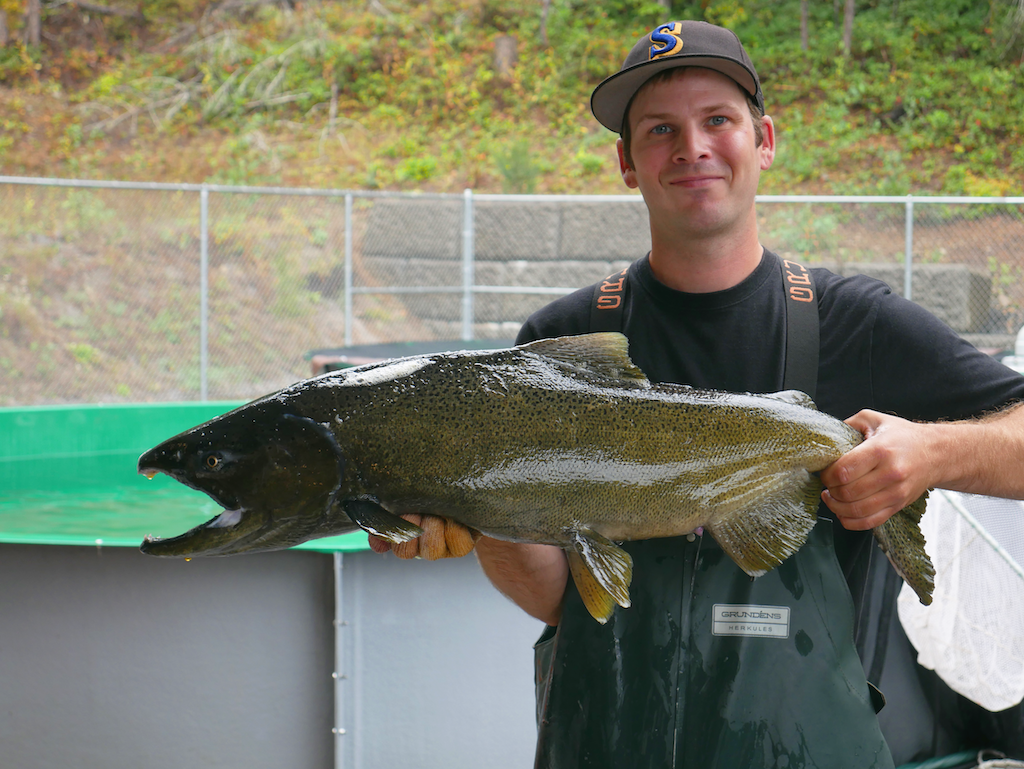Much attention at the moment is focused on the Klamath River, which flows from the high desert of Southern Oregon to the California Coast. Before the beginning of gold mining, dams, logging and excessive fishing, spring Chinook numbered in the hundreds of thousands throughout the extensive Klamath system, which includes the Trinity River and its tributaries. But over time, the spring population plummeted, with counts under 5,000 fish in recent years.
In 2011, the Center for Biological Diversity, an environmental group, petitioned the federal government to place the Klamath spring Chinook on the Endangered Species List. After consideration, the request was denied by the National Marine Fisheries Service, which said Klamath spring Chinook should remain grouped with fall Chinook — and the population as a whole was not threatened or endangered.
In light of the groundbreaking genetic findings, the petition was renewed in 2017 by the Karuk Tribe, which traditionally fished the Klamath. The tribe was joined by the nonprofit Salmon Restoration Council. The tribe expressed urgency, saying it is now clear that if spring Chinook in the Klamath were to go extinct, they could never be replaced.
In accepting the petition, NMFS said it would take another look at the entire spring-fall Chinook population in the Klamath. If a listing of threatened or endangered is warranted, one option would be to keep the spring and fall populations together and consider the overall population decline since the 2011 petition. Based on the new genetic information, the agency said it would also consider listing spring and fall runs separately.
For listing purposes, the Endangered Species Act serves to protect entire species and subspecies as well as “distinct population segments” — abbreviated as DPS — among vertebrates. For Pacific salmon, the smaller groups are called “evolutionarily significant units,” or ESUs.
NMFS can designate an ESU when a population is reproductively isolated and represents an important part of an “evolutionary legacy” of a species. Most ESUs are identified by the stream or close group of streams where the salmon originate. All Puget Sound Chinook — spring and fall — are listed as threatened under a single ESU.
The agency currently considers spring and fall Chinook in the Klamath-Trinity system as a single ESU, but it could create a new ESU for spring Chinook alone — an idea that has stirred up discussions over the future of the Endangered Species Act.
Spring and fall Chinook from the same river system are known to be closely related through more than 99.9 percent of their genome, yet a tiny fragment— the “migration gene” — makes them behave like a totally different fish. As new genetic information is discovered, federal officials are challenged to sort it all out and provide appropriate protection to unique populations, said Robin Waples, a researcher with NMFS’ Northwest Fisheries Science Center who helped develop the current DPS/ESU framework for grouping salmon.
“Should each river be a separate DPS that includes both life history types?” he asked in a “perspective” paper published in the journal “Evolutionary Applications.”
“Should each existing DPS be split into two — one with all early-migrating populations, the other with all late-migrating populations? Should each early-migrating population be a separate DPS, with the late-migrating populations either lumped (together) or in separate DPSs? Pros and cons for each of these strategies as well as others can be imagined.”
As more genetic discoveries become linked to physical and behavioral traits among salmon and thousands of other species, it will be important to create a process for using the discoveries to meet conservation goals, Waples said. Identifying populations with unique qualities is one step, he added. Making sure those qualities persist is another.
“Applied conservation is hard because biology is complex and messy,” he wrote, “and every practical application involves interactions with human customs, laws and institutions that can differ from place to place.”







